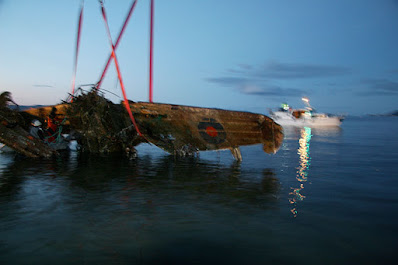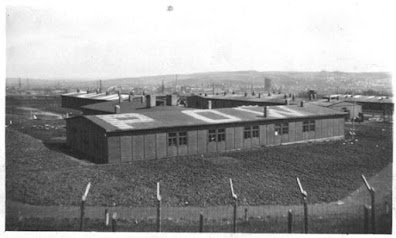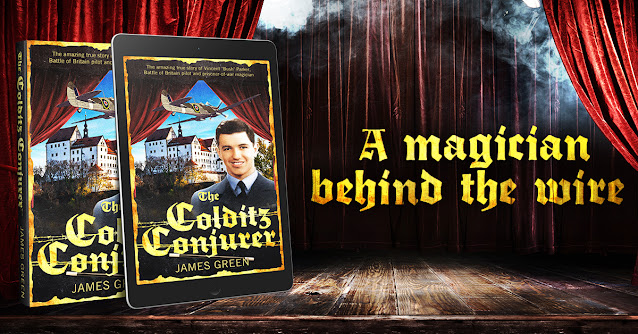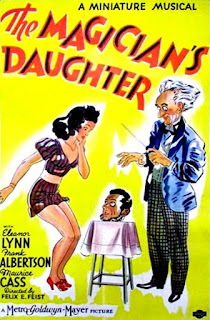Part 2 of a three-part blog telling the compelling story of John Casson, magician, navy pilot, and Stalag Luft III prisoner-of-war. His part in The Great Escape and how magic and performing helped him and others survive captivity.
In this part, we look at Casson's capture and his time at Dulag Luft (Oberursel), where he becomes a coder and where the origins of the Great Escape were laid ...
A failed attack and a downed aircraft
On 14 June 1940, the British attacked the German warship Scharnhorst from the air. The attack failed. There were too few Skuas dive-bombers, with too little cover, facing too much opposition and with inadequate coordination. The event came to be known as Black Thursday, one of the most disastrous days in the Fleet Air Arm's history. Only seven of fifteen aircraft made it back.
The fate of the leading aircraft, flown by Lieutenant Commander John Casson, was in doubt.
"When seven out of our aircraft had managed to get back to the Ark Royal, someone reported seeing me go down in a dive pursued by a Messerschmitt. He was not to know that I had dived down to the level of the fjord in the hope that I could outsmart my opponent in low-level crazy-flying."
The returning crews reported that Casson and observer Peter Fanshawe had probably been shot down by the Messerschmitt.
In fact, although Casson's Blackburn Skua was riddled with bullets, its fuel tank damaged and Fanshawe wounded, superb flying skills enabled Casson to land it on the surface of Orkdalsfjord, an offshoot of the Trondheim Fjord. The Skua was damaged further by the high-speed landing and quickly started to sink. At this point, the Messerschmitt pilot flew off, claiming a 'kill'.
Lt Cdr John Casson's Blackburn Skua recovered from the Orkdalsfjord
(Source: www.titled.com)
*In April 2008, Casson's Blackburn Skua was recovered from the Orkdalsfjord, near Orkanger in Norway. The remains of the aircraft were transferred to the National Norwegian Aviation Museum in Bodø.
Freeing themselves from the aircraft, Casson and Fanshawe jumped into the ice-cold water. Unable to retrieve the Skua's emergency dinghy, they swam towards land. A Norwegian with a rowing boat came out to pick them up and took them to hospital, where Fanshawe had his bullet extracted. Soon after, German troops arrived and they were taken prisoner.
For John and Peter, the realisation that they were now 'in the bag' was quick to come:
"As the wings touched the water and the aircraft skidded to rest in a flurry of spray, with her tail in the air, the whole of [my] life in England ... was cut off clean like the severing of the umbilical cord. This was not the end of chapter but irrevocably the end of the kind of life that [I] had always known. It was like being born, suddenly to be taken out of a life of relative comfort and security and to be pitch-forked into a completely new unknown world where few, if any, of the old standards would apply. A completely new life was starting for me ..."
'In the bag'
A few days later after Scharnhorst attack, the Admiralty passed the news that Casson was 'missing, believed killed' to his family. Lewis Casson was informed shortly before he went on stage at the Old Vic. As a true professional, he played that night "without faltering".
At the time of their capture, in June 1940, tens of thousands of prisoners were pouring into Germany from Dunkirk, and so news that John was alive was going to take a long time to reach England.
In the end, news of his capture reached the family within a month. On 11 July 1940, Lord Haw Haw (U.S.-born Briton William Joyce), who broadcast Nazi propaganda to the U.K. from Germany, announced that Casson was a prisoner. The Germans had linked John with his famous parents and decided that the story would make good news. Sybil Thorndike was on the Schutzstaffel's (S.S.) 'Black List', so Casson's capture was significant.
'Lord Haw Haw', William Joyce
(Source: Public domain)
A week later, on 19 July 1940, Casson was 'Mentioned in Dispatches' for, "daring, resource and continued devotion to duty in operations by the Fleet Air Arm against the enemy over the Coast of Norway". He wasn't to find about the award until several months later.
With news of his son's capture confirmed, Lewis Casson took on the role of notifying relevant organisations. He wrote to the secretary of The Magic Circle and an entry about John's POW status appeared in The Magic Circular from September 1940 onwards.
Entry in The Magic Circular listing Lieutenant [sic] John Casson as a prisoner of war
(Source: The Magic Circular)
Dulag Luft (Oberursel)
After their capture, Casson and Fanshawe were moved, via Oslo, over 1,000 miles through to Denmark and into Germany, until they reached a small camp at Oberursel outside Frankfurt. The camp was a Dulag Luft (Durchgangslager der Luftwaffe, a transit camp of the air force). It was used as a collection and interrogation centre for newly captured Allied airmen.
Dulag Luft (Oberursel)
(Source: Public domain)
While most captured aircrew passed through Dulag Luft within a few days, weeks or months, en route to other camps, a small number remained as permanent staff. The group comprised about twenty-five officers who were responsible for liaison with the camp staff, distribution of food and clothing, discipline within the camp, and providing aid and guidance to the new prisoners. As an older officer, Casson was selected to be one of the permanent staff. The 'permanents' were led by Wing Commander Harry Day as the Senior British Officer (S.B.O.), and his deputy Lieutenant Commander Jimmy Buckley (an old friend of Casson's). Others on the team included Squadron Leader Roger Bushell, who later masterminded the Great Escape at Stalag Luft III (as 'Big X') and Lieutenant Peter Butterworth R.N.
Keeping up morale
In the Dulag Luft, boredom quickly set in. Casson kept himself and others entertained by performing card tricks and other magic for his fellow captives. Playing cards were ubiquitous in POW camps, with supplies of these and other recreational items (including magic trick sets and books) sent into the camps via the Joint War Organisation Indoor Recreations Section. Later in the war, playing cards were craftily designed to hide secret escape maps.
British Red Cross Society and Order of St. John playing cards supplied to prisoners of war
(Source: Red Cross)
In one letter home, Roger Bushell wrote that, "John Casson - Sybil Thorndyke's [sic] son - entertains us with the most priceless shows about once a month".
Casson started off entertaining using his magic skills, but morphed into acting, along with fellow prisoner Peter Butterworth and other amateur performers. Jimmy Buckley, a born comedian who occupied much of his time in captivity writing comic sketches, would often join them. There was no purpose-built theatre at Oberursel, so they improvised stages at the ends of the timber barrack blocks.
There is even a record of Casson "displaying his most histrionic buffoonery combined with card tricks" during a remarkable evening when he, 'Wings', Buckley and another member of the permanent staff attended a small dinner party with the affable camp commandant.
For six months, Casson wasn’t the only magician in Dulag Luft (Oberursel). Vincent ‘Bush’ Parker, a British-born Australian-raised R.A.F. pilot arrived at the camp in August 1940. The Germans plucked him from the sea after he parachuted out of his damaged Supermarine Spitfire during the height of the Battle of Britain. A keen magician, Parker had toured as an assistant to The Great Levante – Australia’s most famous illusionist – before the war. Casson quickly befriended him and they no doubt spent many hours sharing magic knowledge and practising tricks.
For the first year, Casson also studied theology, receiving books on the subject from family and friends though the Red Cross and Y.M.C.A. In the absence of a military padre, Casson held Sunday morning services for the Protestant community and provided religious support to the permanents and newly captured aircrew passing through the camp. His work helped those prisoners who drew on the Christian ethos to make sense of their captivity and receive comfort from their religious beliefs. Casson also acted as the camp librarian.
Coded letters
But behind the scenes of their theatrical and pastoral activities, the permanents were occupying themselves with more serious duties...
Airmen as a breed are not temperamentally well disposed to endure captivity. Most of them choose to fly because fighting in the sky offers them a sense of individuality that other forms of warfare deny them.
And so it was with the permanents. Most of them were particularly aggrieved, as they had been captured early on in the war and hadn't had a real opportunity to fight the Germans.
As S.B.O., 'Wings' Day appointed Jimmy Buckley as chairman of the Escape Committee. In turn, Buckley appointed Roger Bushell as the chief of intelligence. Other members of the permanent staff took on supporting roles. John Casson became a coded letter writer.
With an increasing number of aircrew and other forces personnel getting captured, the British Directorate of Military Intelligence set-up Section 9, or M.I.9 for short. Starting in December 1939, this secretive organisation was tasked with assisting Allied forces, especially aircrew, to evade capture if shot down or trapped behind enemy lines, and helping POWs held by the Axis Powers to escape.
M.I.9 had no contact with any camp until the early months of 1941. Then, it managed to identify letters from POWs to their families containing prearranged hidden codes which forward-thinking serviceman and their families had set-up before they left home. Later, selected aircrew were trained in specially designed M.I.9 codes. As these individuals started to be captured, they passed on the code arrangements to POWs already in the camps.
By mid-1940, the permanent staff had access to at least one of the private codes and contacted M.I.9. Casson, 'Wings' Day and Roger Bushell all knew the code, along with Flying Officer Vincent 'Paddy' Bryne, one of the other permanents, and some others.
After the war, John Casson wrote, "While at Dulag Luft, I got hold of the RAF 'Letter Code' whereby letters from me to my wife could contain secret intelligence reports to what I later discovered was M.I.9".
Because most newly captured aircrew were sent to Oberursel, the permanents gathered the latest intelligence from them on German military operations. As chief of intelligence, Bushell carefully collated this. He and 'Wings' Day then divided out messages to be sent to M.I.9 among the trained code users.
British POWs at Dulag Luft (Oberursel), including Lt Cdr John Casson (4th from left) and Lt Peter Fanshawe (1st from right)
(Source: Public domain)
The First Great Escape
Not content with sending important intelligence back to the U.K., and assisting newly captured POWs, the permanents planned an escape.
In June 1941, 17 British officers, including 'Wings' Day, Jimmy Buckley and Peter Butterworth escaped Dulag Luft (Oberursel) via a tunnel they had dug over the preceding months. In fact, they had dug two earlier tunnels. In the first, the water table proved higher than expected and the tunnellers found themselves clawing through mud, which they couldn't shore up. After only a few weeks of digging, they gave up. The second was discovered by the Germans. This third attempt, during drier months, was a more successful go at digging out the first tunnel. This time, they managed to extend the tunnel beyond the perimeter wire. Roger Bushell escaped the night before (although not via the tunnel). All were later rounded up by the Germans, despite many reaching neighbouring countries.
Casson's wider role in the escape is unclear, but given the small number of permanent staff in the camp, he was likely involved in numerous ways. He may have helped dig the tunnels, or dispose of the spoil. Or, provide security for the tunnelling, or diversionary activities. After all, the tunnel began in the wash-room next to his own room.
Casson chose not to join the escape itself. His actor parents were pacifists and his brother, who was also on the stage, was a conscientious objector. Casson confided to 'Wings' that he held the same strong convictions and was on the point of resigning his commission in the Navy when war broke out - but he went to war. The Navy had housed, trained, disciplined, and paid him for 15 years or more, and he felt he had a duty to pay his debt.
The Dulag Luft escape was the first mass escape of World War Two by British POWs, and the first tunnel constructed to be completed and used.
After serving a punishment sentence in solitary confinement, the escapers were transferred to other camps.
Lieutenant Commander's Jimmy Buckley (left) and John Casson (right) at Dulag Luft (Oberursel)
(Source: Courtesy of Mark Kosmider)
Moving on
In early 1942, the Germans built a new prisoner-of-war camp near the town of Sagan, in the eastern German province of Lower Silesia (now in Poland). It was called Stalag Luft III. In April the same year, captured air-force personnel started to be centralised in this new Luftwaffe administered camp.
After two years at Dulag Luft (Oberursel) John Casson was one of the first POWs to be moved into Stalag Luft III. There he would meet back up with 'Wings' Day, Roger Bushell and many of the others. Reunited, the original permanents planned an even bigger escape...
In Part 3, I tell the story of John Casson's time in Stalag Luft III, scene of the 'Wooden Horse' escape, the 'Great Escape' and many others.
Related article: Part 1 of this blog tells the story of John Casson's early life, how he became a naval aviator, magician and prisoner-of-war. Blog link.
Related article: Part 3 of this blog tells the story of John Casson's time at Stalag Luft III, where he takes over camp entertainment and provides a distraction for preparations for the Great Escape. Blog link.
*** AVAILABLE NOW ***
The Colditz Conjurer tells the amazing true story of Flight Lieutenant Vincent ‘Bush’ Parker, Battle of Britain pilot and prisoner-of-war magician.
Written by the Magic at War team, The Colditz Conjurer is a remarkable tale of perseverance, courage and cunning in the face of adversity. It features over 55 original photographs and maps. 126 pages.














Comments
Post a Comment